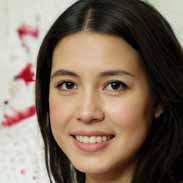MGMT 480 CHAPTER 12 – Flashcards
Unlock all answers in this set
Unlock answersquestion
1. In ABC inventory analysis, which of the following is true for "C" items? a. Tighter control of "C" items (than for "A" or "B" items) is appropriate. b. "C" items are critical items that must be monitored with a fixed period system. c. "C" items make up a lower percentage of total inventory value ($) than either "A" or "B" items. d. "C" items make up 10-20 percent of inventory items.
answer
C
question
Inventory that represents partially completed products waiting further processing is called ____ inventory. a. Raw materials b. Work-in-process c. Cycle d. Safety stock
answer
B
question
Additional inventory kept over and above the average amount required to meet demand is called ____ inventory. a. Seasonal b. Work-in-process c. Finished goods d. Safety stock
answer
D
question
Inventory that acts as a buffer between workstations in flow shops or departments in job shops is called ____ inventory. a. Raw materials b. Work-in-process c. Cycle stock d. Safety stock
answer
B
question
Costs associated with inspecting, unpacking and putting into storage incoming inventory are components of ____ cost. a. Ordering or setup b. Holding c. Shortage d. Unit
answer
A
question
Which of the following is not a component of holding cost? a. Taxes b. Insurance c. Material handling d. Order processing
answer
D
question
Two fundamental inventory decisions are when to order and how much to order. Which of the following statement is true with respect to Fixed Quantity (FQS) and Fixed Period (FPS) inventory systems? a. A FPS orders a fixed period quantity when the inventory position reaches or drops below the reorder point (r). b. A FPS must cover a time period of T + L to cover the risk of a stock out. c. A FPS places an order for the economic order quantity every T time units. d. A FQS places an order to replenish the inventory position up to a target level (M) when the inventory position reaches the reorder point (r).
answer
B
question
Independent demand a. can be derived/calculated b. is related to other SKUs c. is also called finished goods inventory d. needs to be forecasted
answer
D
question
Demand that incorporates uncertainty is called ____. a. Static b. Dynamic c. Stochastic d. Deterministic
answer
C
question
Demand that varies over time is called ____. a. Static b. Dynamic c. Stochastic d. Deterministic
answer
B
question
Demand that is stable over time is called ____. a. Static b. Dynamic c. Stochastic d. Deterministic
answer
A
question
Which of the following is incorrect regarding inventory management? a. The two fundamental inventory decisions are when to order and what to order b. Inventory management applies to goods and to services c. Different types of inventory characteristics require different approaches for control d. SKUs are often aggregated or partitioned into groups with similar characteristics or dollar value
answer
A
question
Backorders ____. a. Result from lost sales b. Have little financial impact c. May occur as a result of a stockout d. Force a customer to purchase elsewhere
answer
C
question
Using ABC analysis, continuous monitoring and accurate record keeping relates best to ____ items. a. A b. B c. C d. B and C
answer
A
question
"The inability to satisfy the demand for an item" is the definition of a a. reorder point b. stockout c. lost sale d. backorder
answer
B
question
Inventory position is computed using all the following except a. On-hand b. Scheduled receipts c. Backorders d. Lead time demand
answer
D
question
Using a fixed quantity system (FQS), as the reorder point increases a. safety stock increases b. safety stock decreases c. the number of orders increases d. the number of orders decreases
answer
A
question
Which of the following is not a key assumption underlining the classic economic order quantity (EOQ) model? a. The entire order quantity arrives in the inventory at one time b. There are only two types of relevant costs: order/setup and inventory-holding c. Demand is assumed to be stochastic d. Stockouts are not allowed
answer
C
question
Average inventory in the EOQ model is defined as a. The order quantity divided by the number of inventory cycles per year b. Annual usage divided by the number of inventory cycles per year c. One-half the order quantity d. One-half the annual usage
answer
C
question
Which one of the following statements concerning the economic order quantity (EOQ) model is not true when the unit holding cost increases? a. the economic order quantity will decrease b. the number of orders per year will decrease c. total ordering cost will increase d. average inventory will decrease
answer
C
question
For the single-period inventory model, solving for the optimal order quantity involves using a. marginal economic analysis b. total cost analysis c. ABC analysis d. reorder point analysis
answer
A



